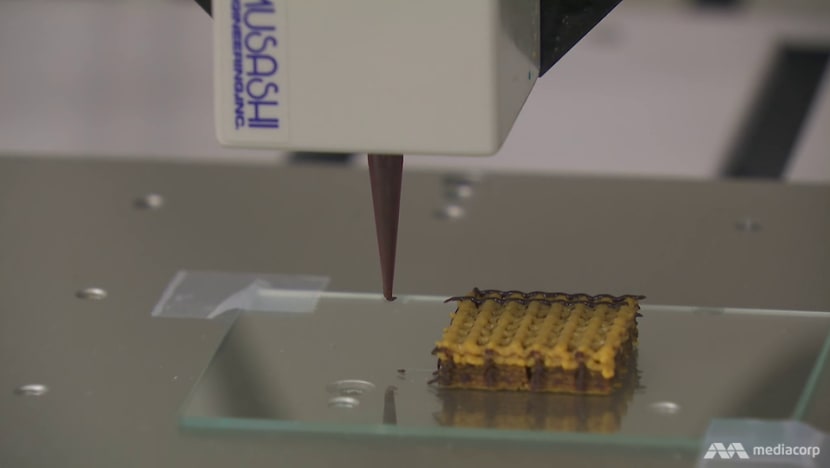How 3D food printing can help the elderly
The ability to create customised food, from chilli crab to durian, can go a long way towards helping those with chewing and swallowing difficulties. It could be big bucks too, the programme Money Mind discovers.
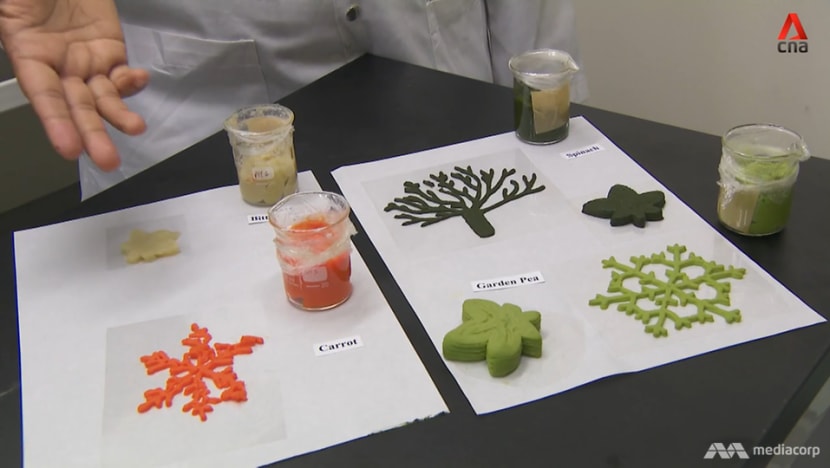
Carrot, bitter gourd, spinach and garden peas are among the foods 3D-printed by researchers in Singapore.
SINGAPORE: These days, 3D food printers are used in the industry to make chocolates and pastries.
But at Singapore Polytechnic, researchers are exploring the idea of printing food that the elderly crave, such as chilli crab and durian, but with a new twist.
“(For) durian, we can reduce the sugar content and also fortify it … with calcium and vitamin D,” said Evelyn Ong, product innovation manager at the polytechnic’s Food Innovation and Resource Centre.
“And we can reconstruct it using 3D food printing to a shape that looks familiar to the elderly.”
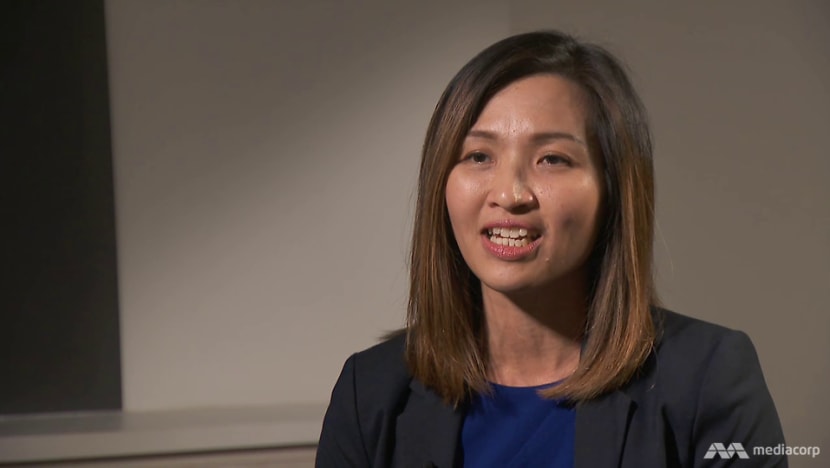
With 3D food printing, one can produce food that is not only palatable and healthier for the elderly, but also easier for them to chew.
This ability to print food has the potential to revolutionise the way we eat, by offering convenience as well as customisation in terms of texture and even nutrition, the programme Money Mind discovers. (Watch the episode here.)
PRINTING MEALS FOR PATIENTS
3D printing technology is not new, though it is usually associated with creating materials to build cars, planes and houses.
But after Russian cosmonauts printed meat in space in October — showing how useful the applications of 3D printing can be — food printing has gained traction.
It is a process whereby food materials (in paste or gel form) are extruded from cartridges to form layered designs programmed on a computer.
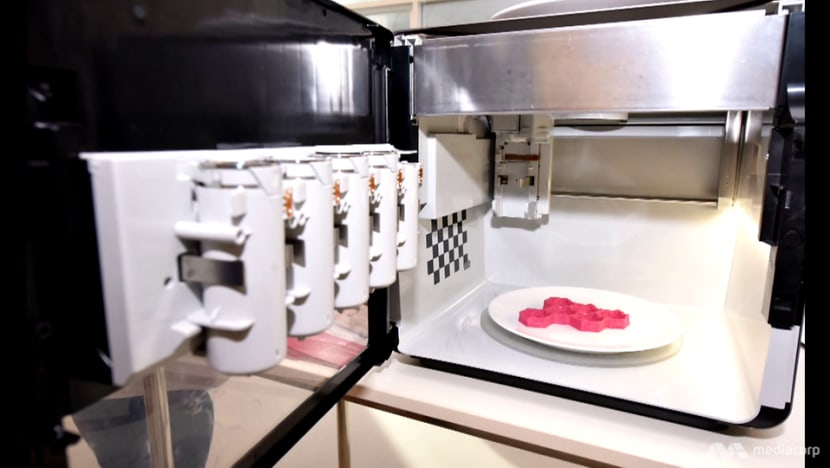
At the Singapore University of Technology and Design (SUTD), researchers are working to advance these methods, including developing a new kind of food ink, which can be used to maintain the food structure. It has properties similar to those of toothpaste.
Some of the researchers are also working with Khoo Teck Puat Hospital to create printed meals for elderly and frail patients who have trouble swallowing food. These meals include sweet potatoes, pollack, green peas and even milk.
The hospital’s senior principal dietitian, Gladys Wong, is looking to get puree that is easy to swallow and can be produced consistently.
“The food (must be) nutritious as well and, more importantly, be visually appealing (so) that the elderly patient or people (who had a) stroke are able to eat it and want to eat it,” she said.

Carrot, bitter gourd, spinach and garden peas are among those printed by researchers, while chicken, fruits and rice are next on the agenda.
In Sweden, two cities are already testing a new food printing technique for eldercare homes. The idea is to stimulate residents’ appetites by making the pureed food look like the real thing.
At this moment, however, there is a limited range of food that can be printed, and scalability is also an issue, pointed out Ong. “It may take about 30 to 45 minutes just to print out a crab claw.
“If you’re talking about mass-producing for different patients, it may take a much longer time, which isn’t feasible at this moment.”
There is also the issue of food safety regulations. While there are consortiums planning to do 3D food printing in the European Union, “there is no safe limit, or safe rules”, said Wong.
“In Singapore, we also have to work with the regulatory bodies to come up with those regulations.”
WATCH: 3D food printing desserts to hospital meals (2:45)
STAGE SET FOR A BOOM
With a price tag of about S$5,000, commercial 3D food printers are also out of reach of most people for now.
But some experts say it is only a matter of time before food printing becomes a game changer for food manufacturing and services.
Anrich3D, a spin-off from the Nanyang Technological University, is now developing 3D food printing based on individual nutritional preferences. It aims to mass-produce personalised meals, such as burgers, pizzas and sandwiches, using apps and vending machines in future.
“How much food we can print isn’t limited by the size of the printer,” said the start-up’s founder, Anirudh Agarwal.
“We can continuously keep feeding material (to the printer) and use it in a large setting like a hotel, restaurant or even a manufacturing facility.”
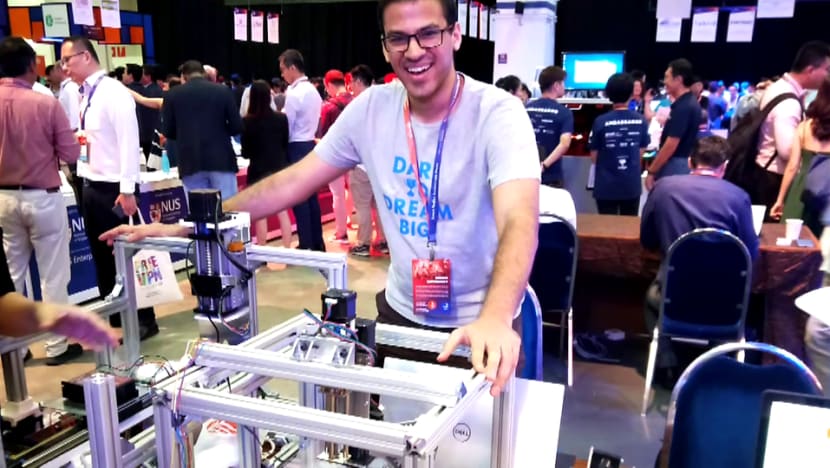
In Japan, a food technology company came up with a restaurant concept last year to create 3D-printed sushi tailored to each diner based on the individual’s biological data.
SUTD professor and head of Engineering Product Development, Chua Chee Kai, estimates that the 3D food printing market was worth about US$49 million (S$69 million) globally as of 2018.
It is expected to grow to US$400 million or more by 2024. In future, housewives as well as restaurants may be printing food, Chua said.
“If you have printers, you need inks, and … it could be sugar, it could be all the different vegetables,” he added.
“I think we’ll create a whole new generation of chefs who’ll be able to download recipes. I’d like to term this digital gastronomy.”
Watch this episode of Money Mind here. New episodes every Saturday at 10.30pm.
